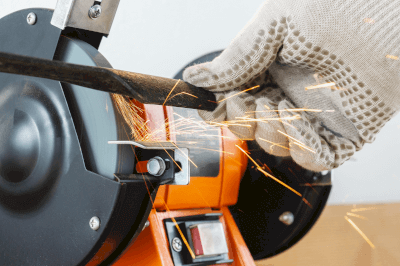What Is a Whetstone?

A whetstone is, in the broadest sense, a tool, such as “a tool for cutting and polishing rocks and metals.”
A whetstone is widely used in a variety of forms, from household to industrial applications.
For home use, a whetstone is commonly used to sharpen kitchen knives, often found in rectangular or block-shaped.
Industrial whetstone is often disk-shaped wheels with a mounting hole in the center that is attached to a power tool.
Uses of Whetstones
Whetstones are used in the following applications.
- Cutting whetstones
Cutting whetstones are often used in the plumbing industry.
A cutter wheel, which is a disk-shaped whetstone, is attached to a pipe cutting machine called a tube cutter.
The whetstones are rotated to cut the required length of piping work. - Abrasive cloth paper (sandpaper)
This is an abrasive tool made by bonding abrasives to cardboard, cloth, or other material with an adhesive.
Principle of Whetstones
There are various types of bonding agents used in whetstones, depending on the application.
The most commonly used resinoid is made by a process called the “bakelite method.”
Next, the principle of how whetstones grind workpieces is explained.
- Normal Grinding Process
In normal grinding, when the sharpness of the abrasive grains is worn, the grinding process becomes dull, the abrasive grains drop off and new grains appear on the surface.This ensures the necessary grinding force at all times.
In this state, chips do not penetrate between the abrasive grains, so the surface roughness of the workpiece is excellent, and high quality can be obtained. - Improper Grinding
If the bond of the whetstones is too soft for a hard workpiece, the abrasive grains will not be able to withstand the workpiece and will break.If this happens, the grinding surface will become rough, and the finished surface roughness will deteriorate.
Conversely, when grinding soft workpieces such as aluminum or copper, chips can get between the grains and deteriorate the sharpness of the workpiece.
Resistance during grinding increases, resulting in a rougher finished surface.